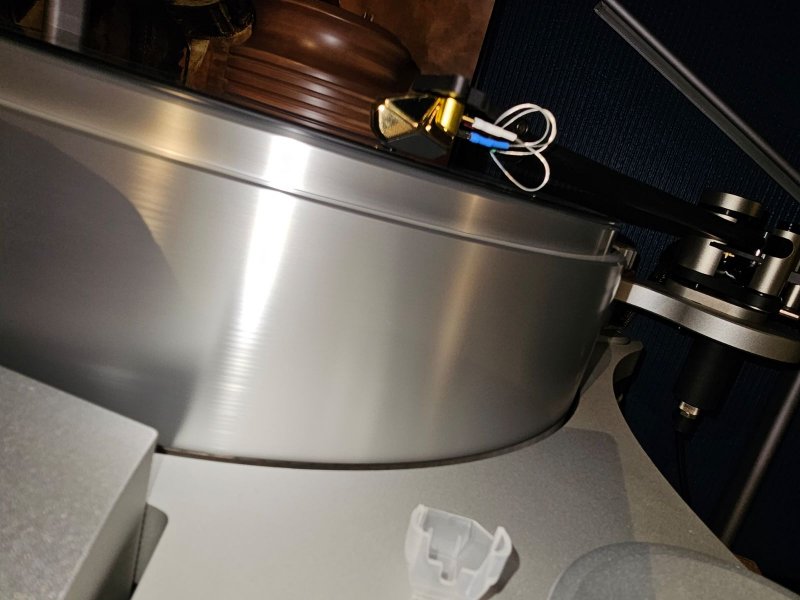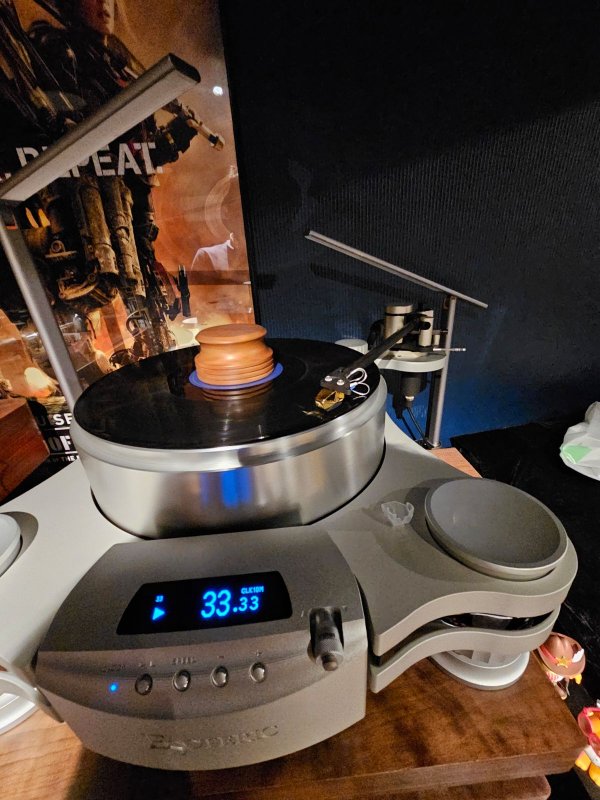Tang,
until i try the FCL with more cartridges and maybe even on other turntables it's hard to be able to make wide claims. i can only say it's a particularly synergistic match with the NVS and it's active isolation, and the 'special' Etsuro Gold....and my system. it's doing things with familiar pressings i've never heard before.
logically.....intuitively......it has certain technical advantages over other tonearms. but it's impossible for me to know if those technical things are what is taking it further. marketing hype verses true performance advantages? does it matter which it is? not to me.
the FCL maintains the magical liquidity of the best arms even with astonishing detail. i've never lived with the SAT so i only know it from brief exposure at shows. the FCL never sounds forced or hard. the music is served, it flows and the inner musical energy is related. not information for it's own sake.
i hear a piano key strike in a most precise never before heard way, but my impression is of color, overtones and energy, not just the impact. like the arm control has such headroom of groove handling that it can dig it all out without breaking a sweat.
maybe other arms can do it too? or is it other tt/arm/cart/system combo's?
regarding your view of the 3012R, i view it like i view your perspective on tone arm cables. your arm preference seems to be a neutral component to get you to where you desire to go musically. so it's perfect for your needs....the best. who could argue? it does what you want from an arm. you can depend on it.
but maybe not exactly what i want from an arm. if someday i have one to compare directly i'll have an opinion. the video's i've heard with the 3012R are mostly very positive....as far as that goes.
Mike,
You mentioned "certain technical advantages" and I would like to take this opportunity to describe some technical aspects related to the magnetic stabilization of the FCL tonearm.
The magnetic stabilization of the FCL is implemented in such a way that the bearing position can be freely selected.
A classic uni-pivot design has a high pivot position and low position of the mass to stabilize the entire construction.
The FCL stabilization is provided by the magnet in combination with the field coil. However, the bearing still consists of a combination of ruby and sapphire bearing parts and not, as some audiophiles sometimes assumed, contact-free due to magnetic forces.
In addition to the more user-friendly handling behavior, it has the advantage of being able to lower the bearing to record level (applies to cartridge heights of 17mm).
The good thing about uni-pivot bearings is that you only deal with a defined point of vibration transmission from the cartridge.
Imagine two ball bearings with 7 or 9 balls each in a tone arm bearing (vertical movement).
3 to 4 balls in one bearing are loaded by the tonearm's own weight and the other balls are more or less unloaded.
Here the vibration transmission behavior is not easy to control.
FCL stands for (F)field (C)oil (L)oaded. This defined bearing point is loaded by magnetic force without adding additional mass to the moving parts of the tonearm.
This transmission begins at the pickup, which transmits a large amount of vibration and energy into the head-shell/arm-wand and should be dissipated through the bearing.
Here it is possible to minimise vibration-related bearing chatter by loading this one bearing point.
Last but not least, the field coil, driven by a constant current source, acts as a motion feedback system to minimize unwanted torsional motion.
Bernd










